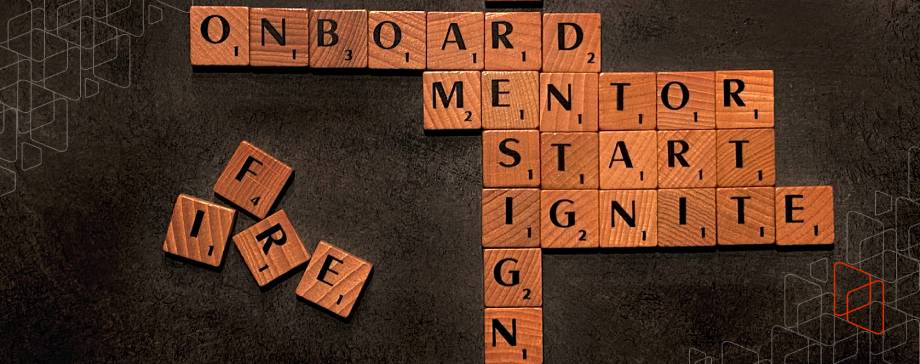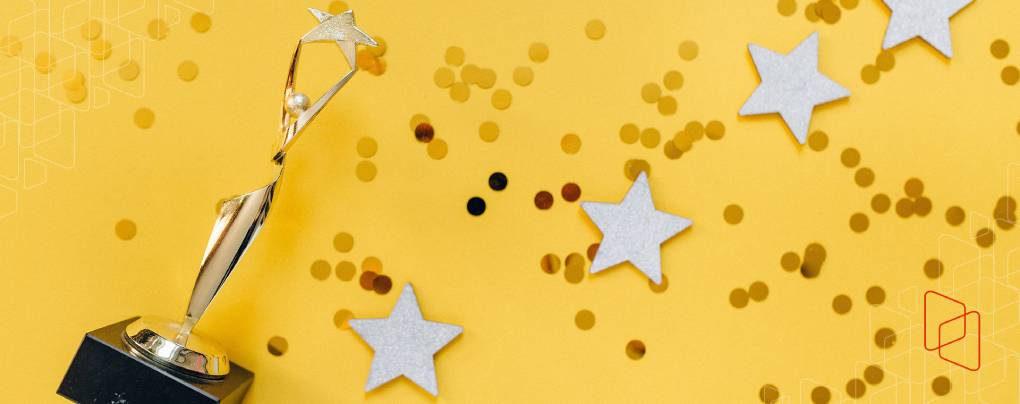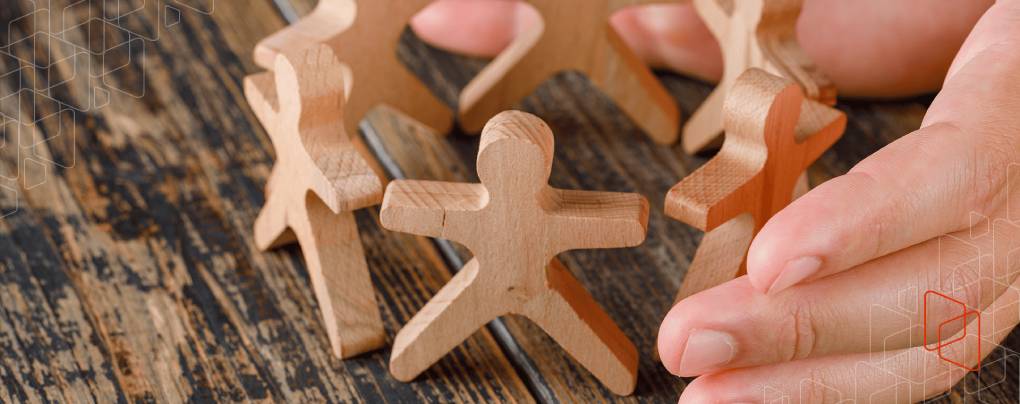Danielle S.
Danielle S. is a freelance writer based in Indianapolis. She holds a Master's Degree in Written Communication/Professional Writing from Eastern Michigan University and has written extensively about the importance of happiness in the workplace.
Pub: June 21 2022
Upd: March 22 2023
Does your workplace have an employee rewards and recognition program in place? If not, then now is the time to invest in one. Specifically, these types of programs can help employees feel better valued in the workplace, which can improve job satisfaction and increase retention.
Yes, a great employee rewards and recognition program will take some time (and resources) to cultivate and perfect. At the end of the day, however, these programs are vital investments that can pay off many times over for your organization.
What is Employee Recognition?
Simply put, employee recognition means making sure that each worker's strengths are noticed—and that each employee knows it. Acknowledging and expressing appreciation for an employee's hard work can be extremely powerful, demonstrating to workers that their everyday efforts aren't going unseen.
Employee recognition can come from a superior (such as a supervisor or manager), but it can also come from peers. Organizations should implement formal recognition programs that allow workers to be recognized and praised by both superiors and those who work alongside them.
Rewards vs. Recognition: What's the Difference?
The words "recognition" and "rewards" are often thrown around loosely, but it's important to understand that these are not exactly the same. The main difference is that an employee recognition program focuses on praising workers for what they bring to the table. A rewards system, on the other hand, takes things a step further by providing tangible incentives (such as prizes or even monetary compensation) to employees for their outstanding performance.
Why Does Rewarding Employees Matter?
Think about it. Would you rather receive a proverbial "pat on the back" or a paid vacation day for leading your team in sales? While taking the time to recognize employees for their achievements and contributions is important, the reality is that employees tend to feel most valued when they are tangibly rewarded for their hard work.
In fact, rewarding good performance is key to improving the overall employee experience within any organization. With this in mind, every company could stand to benefit from designing and implementing not just an employee recognition system—but a rewards program as well.
6 Reasons to Implement a Rewards and Recognition Program
Still not sold on the idea of creating a rewards and recognition program within your organization? Consider these key benefits.
1. Increase Employee Motivation
When employees know that rewards are up-for-grabs, they may feel more motivated not just to do their jobs, but to do their jobs well. By having a clear rewards system in place that all employees understand, you can boost employee motivation and reap the subsequent benefits of more driven workers.
2. Show Appreciation
According to a 2019 NBC News article, 79% of employees who quit their jobs noted a "lack of appreciation" as a key reason for leaving. Even among employees who stick around, feeling seen and appreciated can go a long way towards improving workplace happiness and job satisfaction. And of course, it doesn't have to cost your business a dime to recognize an employee for their hard work. Something as simple as a hand-written note from a manager or supervisor can go a long way towards showing appreciation.
3. Encourage Friendly Competition
When a clear-cut rewards system is in place, employees know what's at stake and what they can achieve if they put in the work. This, in turn, can encourage a little friendly competition among employees. A sense of friendly competition in the workplace can further motivate employees while keeping teams and departments working toward a common goal.
4. Improve Productivity
Did you know that 85% of employees feel more motivated when they're rewarded with incentives? If you're looking for a way to increase the productivity of your workers, it doesn't get much simpler than implementing an employee rewards program. From team bonuses to gift cards and more, a little incentive can go a very long way towards boosting productivity among your teams.
5. Boost Employee Retention
This goes back to the reality that nearly 80% of people who quit their jobs cite a lack of appreciation as a major factor. When employees feel appreciated and valued, they're more likely to have a positive job outlook and higher levels of job satisfaction. As a result, they'll be more likely to stick around. Moreover, it will be a great idea to build a referral program for employees, which is not only an effective recruiting strategy but can also increase retention
If your organization is experiencing issues with high turnover, then it may be time to take a step back and see where you can improve with a reward and recognition strategy. Make sure that this strategy is properly communicated with all employees during the employee onboarding and beyond.
6. Create a More Positive Workplace
Implementing an employee rewards and recognition program is one of the easiest and most effective ways to create a happier and more positive workplace. When workers are happy, not only are they up to 20% more productive, but they also have lower stress levels and may even be able to better problem-solve.
Aside from fostering open communication and building strong relationships among your employees and management, creating a positive feedback loop through a rewards/recognition program is an excellent way to let positivity flow through your organization. Additionally, you could implement remote working as an option. 74% of workers say that having the option to work remotely would make them less likely to leave a company as a result of increased satisfaction.
How to Create an Employee Reward Program
It's been established: that rewarding your employees with tangible things (like gift cards and free meals) is the most effective way to reap the benefits outlined above. Whether your organization has a large budget to allocate to an employee reward program or is looking to keep costs down, there are plenty of tips to keep in mind while you're designing a rewards system.
Align Rewards With Performance
Before you get into the fun stuff (like deciding on the rewards you'll offer), it's important to develop the meat and bones of your system. This part may not be quite as fun, but it's just as important because this will create the "structure" for your entire system. It will also ensure that the program is set up clearly and that rewards can be distributed fairly.
When creating a rewards system, it's generally best to align rewards with performance. The better an employee (or team) performs, the greater the reward. What this will look like within your organization will vary greatly based on your budget, the size of your employee base, and other factors. Regardless, the most important thing is that you have a set of rules in place for how and when rewards are distributed.
Educate Employees on the Program
The other important aspect of building an employee rewards program is making sure that workers not only know that it exists, but that they are educated on how the system operates. This may seem obvious, but you might be surprised at the number of organizations that have employee rewards programs their employees know next-to-nothing about.
Upon implementing a rewards program at your workplace, set aside some dedicated time to meet with teams in person and educate them on the program itself. Make sure everybody understands what it takes to earn different rewards and that expectations are clear. It's also a good idea to publish an official document that outlines the program—and to keep it somewhere that is easily accessible for all employees.
Offer Unique Rewards
Finally, we get to the fun part: offering fun and unique rewards to your hard-working employees! Not sure where to begin? Here are some ideas that are sure to get your employees excited:
- Personalized gifts and products (from custom coffee mugs and apparel to gamer merch, seat cushions, and more. Who doesn't love a personalized token of appreciation?)
- Gift vouchers for groceries and other essentials.
- Gift cards for restaurants/family dinners.
- Impromptu/paid time off.
- Monetary rewards.
- Subscriptions to movie/music streaming services.
- Tickets to a concert or sporting event.
- A weekend getaway sponsored by your company.
- Other gift ideas for employees.
How to Create an Employee Recognition Program
As you're probably realizing by now, the costs associated with an employee rewards program can quickly add up. However, it's important to see that money spent as an investment in your team. Still, if you're looking for some inexpensive and even free ways to recognize your employees for their efforts with an employee recognition program, there are plenty of options to consider.
Recognize Excellent Employee Performance
If you're not already holding regular employee reviews, now is the time to start. Not only are employee reviews a great way to see where your workers stand in terms of their overall performance, but these reviews also provide a unique opportunity to recognize your best performers.
The important thing to keep in mind here is to hold reviews regularly so that your best employees can be recognized in a timely manner. Otherwise, it's easy for workers to feel that their efforts have gone unseen. Depending on the size of your organization, you may want to consider holding formal reviews once every few months. A great performance management software can make this easier to implement, allowing managers and supervisors to see top performers in all aspects of the job.
Celebrate Big and Small Achievements
Making sure employees feel recognized means celebrating not just the major achievements, but the smaller everyday victories as well. Providing more frequent praise for smaller achievements is a great way to keep workers motivated as they strive towards bigger milestones. For example, rather than waiting until a team has reached $1,000,000 in sales to recognize them, you might consider setting up a recognition program that acknowledges their efforts with each $100,000 in sales.
Provide Written and Verbal Praise
When recognizing an employee or team for their hard work, it's also important to choose the right medium in which to do so. Written praise in the form of a thank you card or a hand-written note can go a long way, especially when you consider that it gives workers a tangible reminder of their appreciation. However, verbal praise (particularly when it is in front of other peers) can be very effective in its own ways.
No two situations are exactly alike, so you'll need to determine whether a written or verbal phrase (or some combination of both) works best in each new context.
Host Employee Appreciation Events
Holding special events that are 100% dedicated to recognizing and appreciating your employees can go a long way towards fostering workplace happiness. And while it's true that hosting these kinds of events will cost your organization some money, they can actually be very cost-effective when planned carefully.
On a tighter budget? Something as small as buying lunch for your office or bringing a food truck into the parking lot can make employees feel valued. Even simply remembering employees' birthdays and anniversaries with a card and a cake can show them that they're appreciated.
Offer Employee Wellness Programs
Why not recognize your employees with wellness programs that can help your workers feel their best not just on the job, but in all aspects of life? From making sure your employees have access to mental health services to offering memberships to a local fitness center, focusing your efforts on wellness programs demonstrates to your employees that you care about their health and wellbeing. Meanwhile, your organization can reap the benefits of healthier and happier workers. It's a win-win for everybody involved, really.
Offer Professional Development Opportunities
Another great way to recognize your employees is to empower them with the tools and opportunities they need to advance their careers. Make sure your organization is offering its workers a diverse range of professional development opportunities as part of your employee recognition program. Some ideas to consider include:
- Making it easy for employees to share their ideas with management.
- Sponsoring programs for higher education.
- Providing memberships for online training courses.
- Offering "shadowing" opportunities within the organization.
Have a Little Fun With It
At the end of the day, you know your employees best. With that in mind, there's nothing wrong with getting a little creative when it comes to your approach to recognizing your best performers. You might think outside the box and find unique ways to show appreciation to your employees.
For example, you might create a "wall of fame" to display in your break room—or you might even take to your organization's social media page to recognize an employee who has gone above and beyond (with their permission, of course). The key is to make sure that whatever you decide on is sincere and meaningful.
The Bottom Line on Employee Rewards and Recognition Programs
The task of designing and implementing an employee rewards and recognition program can feel overwhelming, but it doesn't have to be. At the end of the day, it's all about finding creative ways to show your employees that they're valued and that their efforts are seen. In doing so, you can improve morale in your own workplace while also boosting productivity and job satisfaction. And of course, you can achieve the ultimate goal of fostering an environment where employees actually enjoy coming to work.
 Photo Credit - Nataliya Vaitkevich
Photo Credit - Nataliya Vaitkevich
- Relevant
- Recent
- Topics
- Archive
- April 2023 (1)
- March 2023 (1)
- June 2022 (1)
- May 2022 (3)
- April 2022 (3)
- March 2022 (5)
- February 2022 (2)
- January 2022 (3)
- December 2021 (3)
- November 2021 (4)
- October 2021 (5)
- September 2021 (8)
- August 2021 (7)
- July 2021 (2)
- June 2021 (3)
- May 2021 (5)
- April 2021 (8)
- March 2021 (4)
- February 2021 (3)
- January 2021 (3)
- December 2020 (6)
- November 2020 (9)
- October 2020 (1)
- September 2020 (5)
- August 2020 (4)
- July 2020 (1)
Discover More Hirebook Posts








